Lookout Elevation: 6,622
Hiking Distance: Drive-up
County: Klamath
Visit: 2007
Calimus Butte Lookout
WillhiteWeb.com
In 1919, this was an observation point tent camp near the center of the Klamath Indian Reservation. A telephone line was constructed to the summit late in the fire season.
In 1920, approval was given to build a forest guard and lookout cabin, not to exceed $500. Labor was not to exceed $6.00 per day. J.C. Miller constructed with the help of Christ Lund. Lumber was sawed at a local mill. They finished late in the fire season a 16 x 16 lookout with a second story tower of 12 x 12 with four sides glassed in and a 14 x 20 two room home cabin for the lookout. Good grass and water was about 2 1/2 miles south of the lookout. A few years later, the agency wrote that the carpenters were hired during the high post-war period and that they were incompetent and deliberately prolonged the job.
In 1923, the lookout was a married woman, who has lived in the lookout building with her two children. The agency was recommending in a letter to another agency that the lookout should live day and night, week after week, in the lookout house, and that would require that he or she have some sort of company, preferably a family and this necessitates extra bed space. The tower serves us for a bed room and would be better if 16 feet square. The Osborne Fire Finder was installed this year, a major improvement over their old method of locating by compass readings.
In 1924, the lookout was Charles Brophy. He had a leg injury when he was on duty as the lookout and had to go to Klamath Valley hospital.
In 1925, the lookout was again Mr. Charles C. Brophy, said to be too old at the age 65. But, the Klamath agency said of him: He knows the country and the people from years living and traveling in this section and has been accurate and prompt in reports of fire and above all he has the confidence of all our men and men of the surrounding forests that his reports of fires are really fires and not sheep dust, whirlwinds, locomotive stacks, sawmill smokes, etc. This is a very vital point as other men whom we have tried (even an experienced lookout) have cost us much money chasing phantom fires and have lost the confidence of the fire guards and others. We recommend the reappointment of Mr. Brophy this year, notwithstanding his age. He is depending on our assurance of last fall that he be our lookout again for 1925. Mr. Brophy has only one leg and there is no other work he can do with one leg. His physical ailments include poor circulation that resulted in losing the leg and we fear may any time lose him the second, and poor stomach which does not thrive on bachelor grub, so that he keeps in better health when not off by himself and economizing as he does up on the butte. Really, last winter I had my doubts whether his health might not go wrong this summer so that he could not go through the season on the lookout. But if we can keep his health then I want to be able to hire him for 1926. (J.A. Howarth, Klamath Agency)
In 1928, Calimus Butte reported 13 fires, all but two of which were on the reservation. The two he reported off the reservation was on Association territory. Calimus Butte has handled on an average of 27 calls per day that require a switch. This was during the month of August.
In 1929, while a newspaper reporter was in the office at the Agency, the telephone rang and John Colvard, the lookout on Mt. Calimus called in giving the figures, 3, 27, 20, of a smoke at an estimated distance of 30 to 35 miles. Immediately Allen F. Space, in charge of all fire control work at the Indian Agency, clapped his degree finder on his special map, turned it to the degree angle phoned in by the lookout, drew a line and measured off 35 miles by the map scale and found there should be a fire of some kind near the Pelican Bay logging camp. A few days later, the lookout reported a fire in the direction of 267 degrees and 15 minutes. The Mt. Scott Lookout got the range at 135 degrees and 40 minutes. Mr. Space drew the required lines on his map and where they intersected he judged the fire to be raging. Again the boys hit the nail on the head, locating the blaze at once., burning near the Buck Williams place. The nearest fire guards were phoned and they soon appeared on the scene and put the fire out in no time. Since it happened in an area where there is no available timber, the only damage done was to burn up Alex Davis cowpunchers bed outfit and spare clothing, leaving him at the mercy of the spring winds.
He had started the fire to cook his dinner over. Leaving it but a few minutes a sudden gust of wind came up and scattered the flames. But the quick work of the fire patrol saved the destructive elements from getting into the huge stand of pine in the Long Prairie unit owned by the Ewauna Lumber Company. Mr. Space stated that putting out the above by only two guards is considered very good work since at present very bad fire weather prevails. Climus Butte reported on 10 fires in May and 13 fires during June, of which 1 was on the Yawkey Tract, 1 on Long Bell, 4 on the Crater National forest and 7 on the Reservation.
In 1930, the lookout was torn down and replaced with a new cupola structure at a cost of $541.99. The cupola had linoleum flooring and plywood ceilings.
In 1933, panoramic images were taken.
In 1939, the lookout was Frank Coburn. A 5000-acre forest fire, that had been controlled, jumped fire trails into a stand of virgin yellow pine, heading to the Calimus Butte Lookout. This stripped efforts of 600 men and a bulldozer to control it. Reinforcements of 400 had arrived the day before from Medford and Klamath district CCC camps. Frank Coburn at the lookout was prepared to move out in the face of the onrushing flames. He reported the fire was moving in his direction but that he would not leave his station until he had to. The fire, moving fast, was less than two miles away.
In 1940, the lookout was Frank Coburn.
In 1942, the lookout was William Barfield until Frank Coburn arrived for duty that season. William then moved over to Modoc Point Lookout.
In 1947, due to lack of funds, all the special fire guards on the reservation were dismissed in early September except the Calimus Butte Lookout because it is centrally located and had most the forest in view. A week or so later, fuel moisture was recorded at 3 percent and humidity 16 percent at Calimus Butte Lookout during the afternoon, the lowest on record for over ten years.
In 1951, at least 27 forest fires started by lightning over a weekend. Every available man was put on firelines and smokechasing duty during the siege which followed seven thunderstorms one night. Frank Coburn, veteran of 15 years as lookout, reported the electric storms were the worst he had ever seen.
In 1953. the lookout was established as a station for the National Climatic Data Center.
In 1961, with the termination act, Calimus Butte lookout became the responsibility of the Klamath FPA to operate and maintain. The lookout this year was Roy Wilson.
September 24, 1965: "Efforts to track a German shepherd dog, believed to be the guide for an unidentified blind man who may be injured or dead in the wilds near Calimus Butte, resumed today in an area where a rancher reported hearing 'hysterical' cries on Wednesday. A search party composed of William E. Johns, director of Guide Dogs Inc., George Wardell, supervisor of KFPA, and Flint, a police dog trained in tracking, moved into the region about nine miles southwest of the butte to investigate the possibility that the cries may have been the owner of the dog. Johns said that Billy Snyder who first observed the mysterious black and white German shepherd dog wearing a handle harness, in the vicinity of the lookout tower September 15. Later other reports established that one day before the dog was observed a blind man and a guide dog were witnessed passing through the county in a station wagon driven by a young woman. Soon after the woman was again observed, driving the car, but without her blind companion. Searchers are working on the theory that the dog sited near Calimus Butte may be the property of the blind man seen in the car. Search teams operating on foot and from helicopter at various times since Friday have failed to trace the guide dog bearing markings that would yield the identity of the owner.
In 1969, the roof was stained and the windows re-puttied.
In 1970, the inside and outside of the living quarters was painted, and a new toilet was installed.
In 1972, sixteen fires were reported from the lookout. Also, a building used in the past for fire crew quarters was torn down and disposed of. It had deteriorated badly and had become a haven for rodents. It was no longer of any value and very unsightly, its removal from the landscape improved the appearance of the site.
In 1974, a new ceiling and windows were installed and the interior painted.
In 2005, the red tile chimney was removed and new new shutters were installed to replace the sheets of plywood that had been nailed over the windows to secure the structure for the winter. During the previous fall, a crew member fell from the roof while securing the windows.
Lookout History
4.8 miles from Beatty on OR 140, turn on Sprague River Road. Follow for 18.2 miles through Sprague River Valley to Lone Pine Road (FSR 65. County Road 852); 6 miles on Lone Pine Road, then right on the paved Williamson River Road; then 5.5 miles to FSR 4542; follow it, FSR 4555, and FSR 150 to Calimus Butte.
Access:
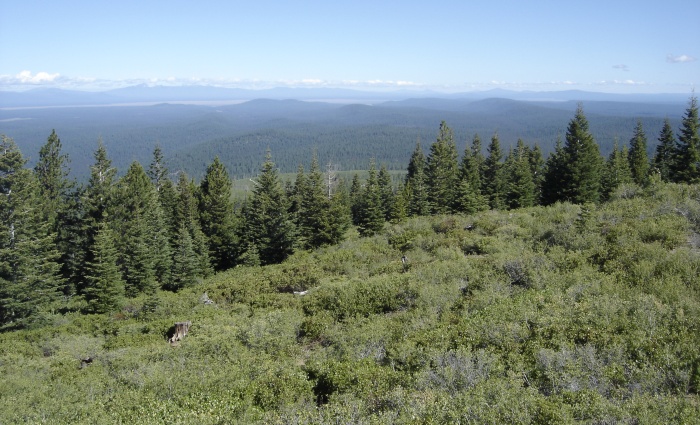
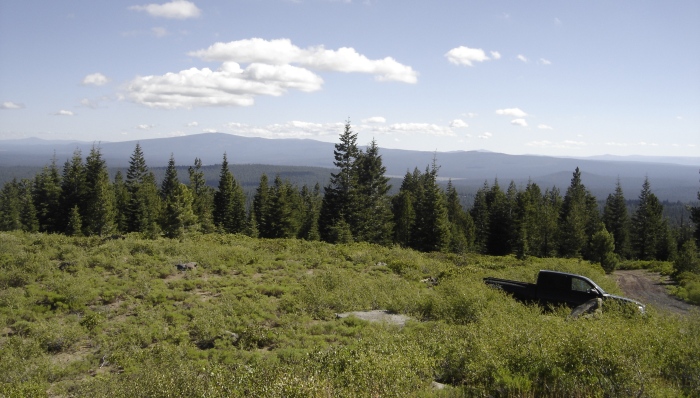
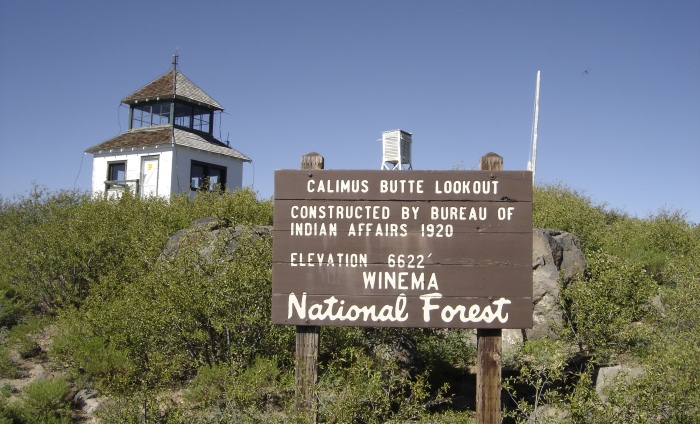
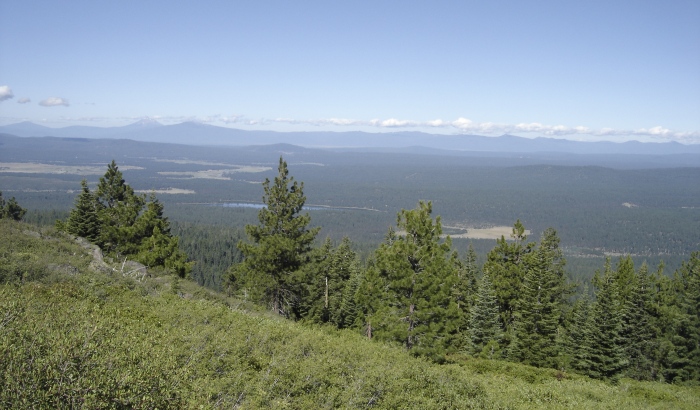
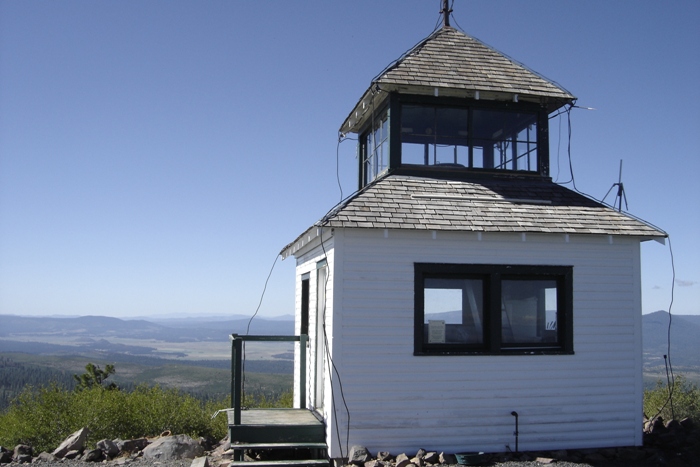
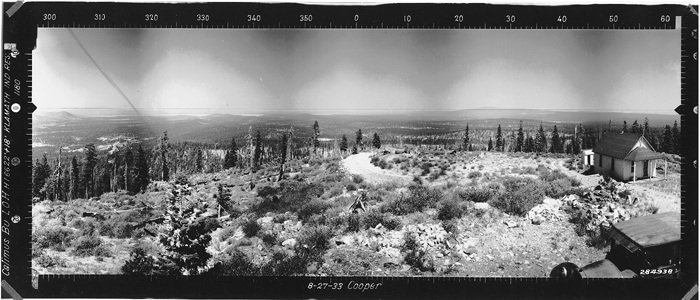
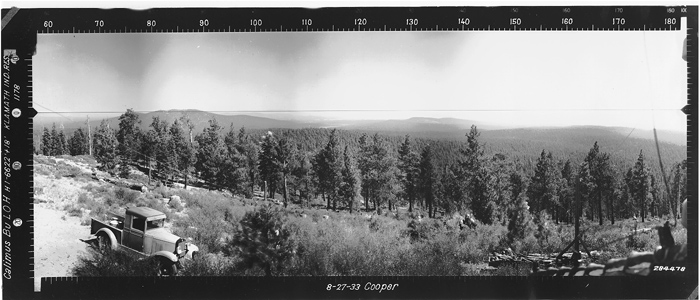
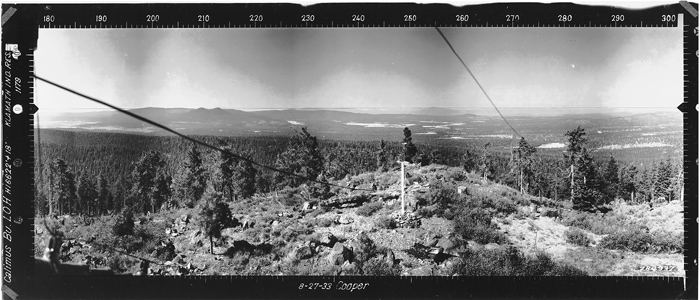
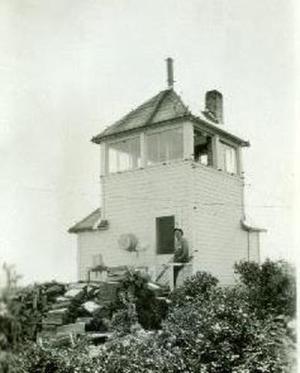
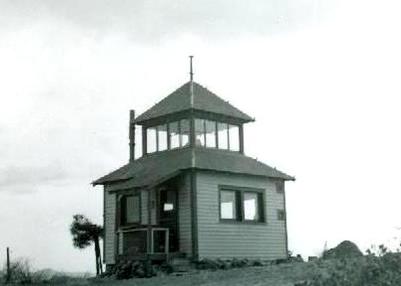
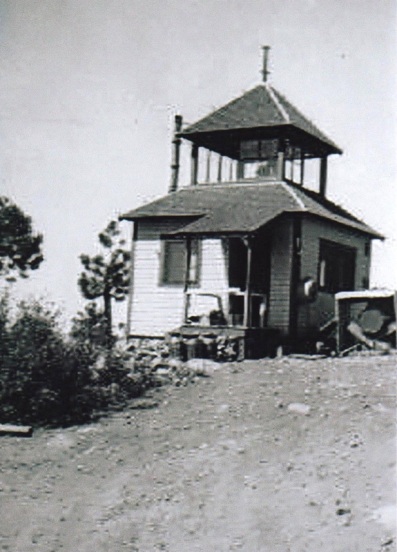
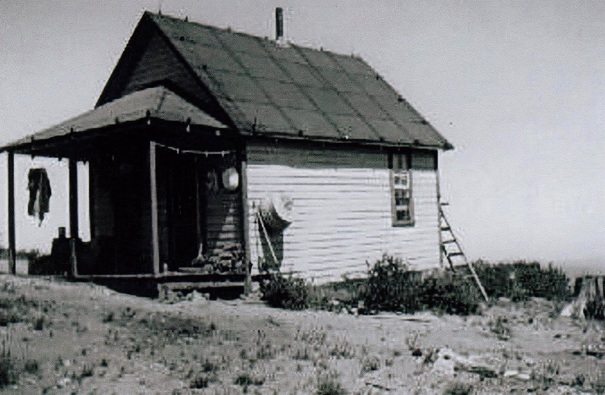
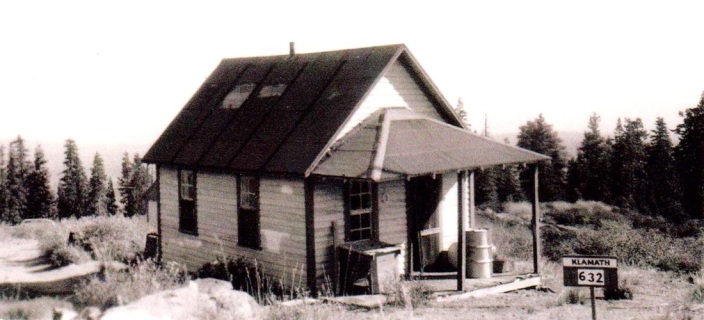
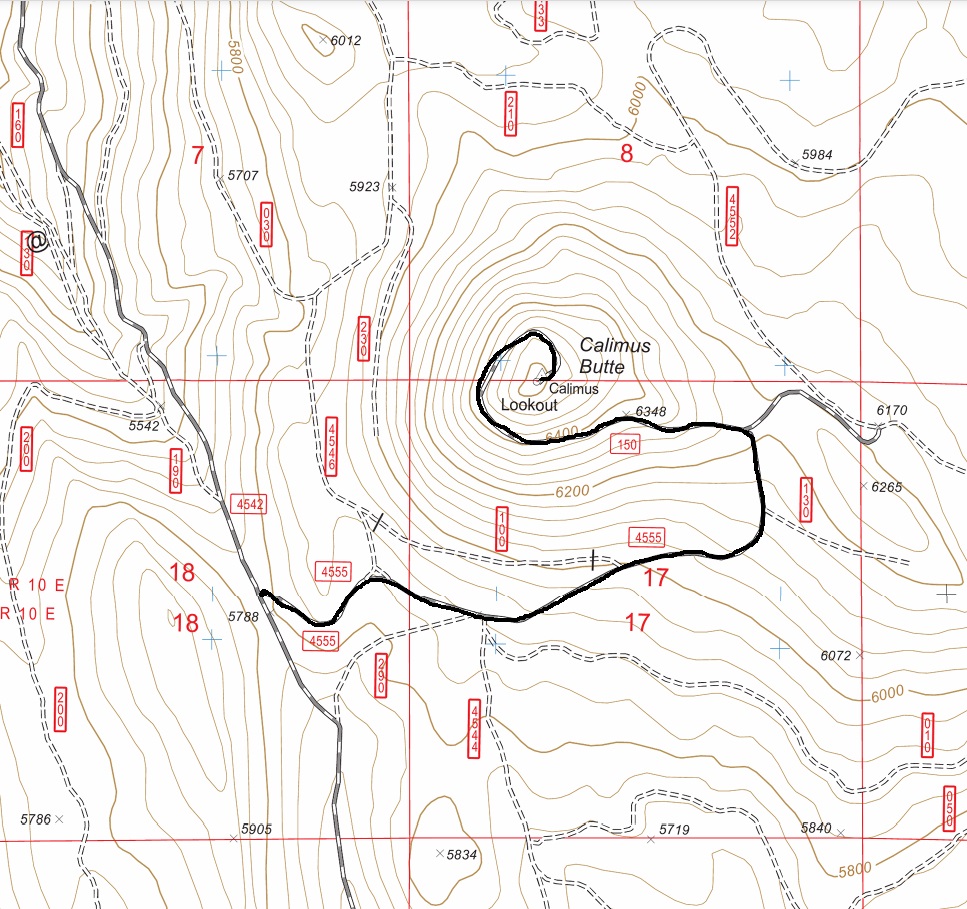
Looking North in 1933
Looking Southeast in 1933
Looking Southwest in 1933
1926
Guard Cabin
Guard Cabin
Looking SW
Looking NW
Looking NE













